NOVEMBER 13-14, 2021: Even before we came to Porto, I was thinking what I would call the blog post about Porto. I liked the sound of Pretty Porto, both words start with P. However, after our walk on Saturday, I did not feel that was an appropriate name – the Porto we saw on Saturday, was not pretty. First impression of Porto was that this must have been how Lisbon looked before it was gentrified. The areas we walked in, had many neglected houses. It was not as modern, not as clean as Lisbon. On Sunday, we walked through different parts of Porto, places with beautiful views and beautiful houses. Afterwards, I felt I could justify the name – Pretty Porto.
Both Friday night and Saturday morning, Mark and David went to the Kadoorie Mekor Haim Synagogue. They returned to the apartment amazed at what they had seen. Like in other European cities, they expected a small minyan of older men. Instead, it was over 150 people, mostly young. These were mostly French students studying in Portuguese medical school. Like in Israel, in France the medical schools are public institutions and there are not enough of them. Portugal has private medical schools, and many French come to study medicine here in Porto.
This was also very different than what I expected after research on the internet. The impression I got, was that there would be many people at synagogue, but that they would be the older local community. From the Porto Jewish community website, they seem to be very active community. In fact, the community opened a Jewish museum – one of the few Jewish museums in Europe that is run by a Jewish community. Either way, it was good to see that a synagogue that almost closed its doors several years ago, is now thriving.
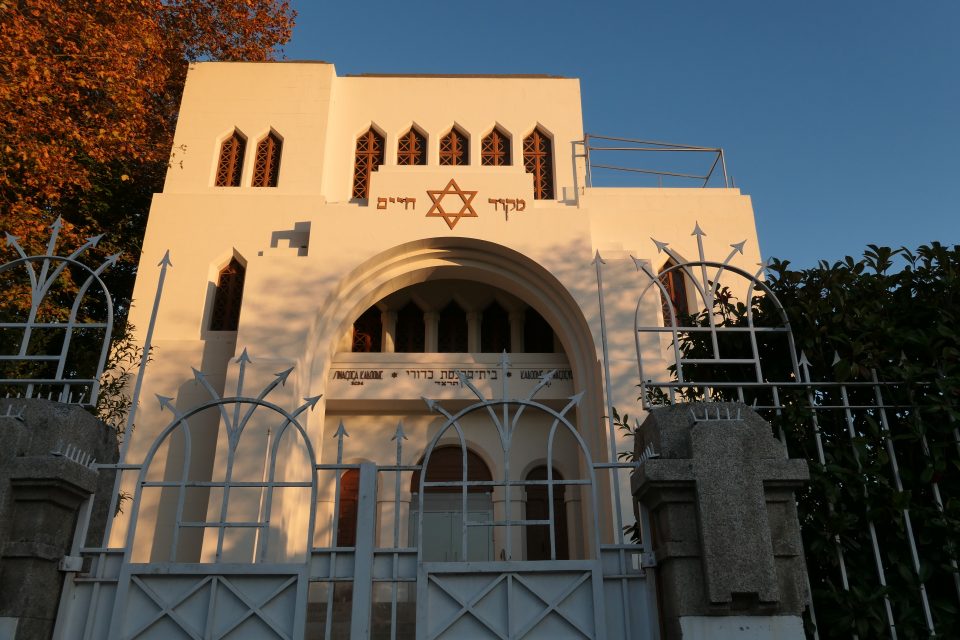
Kadoorie Mekor Haim Synagogue
Shabbat meals were tasty, which was good, since with the accidental double order, we would be eating the same on Sunday.
After lunch, a short rest, we then went for a walk. The streets were full of people, some tourists, but mostly locals. One outdoor restaurant after another, all full. There were several outdoor markets. People were using the parks. In general, there was a very pleasant, vibrant atmosphere. Finally, we saw some families with children. In Lisbon, you barely see a child. Many more people walking dogs (and even that is not a lot), than people with children. In Porto, we saw more, but still not very many. Very different from Israel with children everywhere. Portugal has a very low birth rate, only 1.40 births per woman. Research suggests, this is largely due to women prioritizing professional careers as well as having easy access to health care.
Our first stop was Miradouro da Vitória. Here the difference with Lisbon was very pronounced. In Lisbon, the viewpoints were developed – paved, with railings, trees, benches, gardens. Here in Porto, it was a big dirt lot with an old concrete wall. But like in Lisbon, the view was amazing. From here we saw the city and the Douro river below, the Porto cathedral and the Dom Luis I arched bridge in the distance. On the opposite bank of the Douro, are the many warehouses that hold the Port wine brought in from the Douro valley.
On the street leading to the viewpoint, we stumbled upon some signs, referring to the original Jewish character of this area. It had been called Olival. Turns out that at the end of the 15th century, this Jewish quarter was designated, as it continues to this day, as “Vitória”, possibly alluding to the victory of Christianity over Judaism.
Another surprising find, on the side of the Monastery of São Bento da Vitória, was this plaque. Using Google translate, it seems to be a memorial for the events of 1496, when Jews had either forced conversion or death. It continues to say that like the Burning Bush, they were not consumed. We will add this as a Wandering Jew site.
Our next destination was the São Bento Train Station. This is a station, like many of the churches in Porto, that has been decorated with Azulejo – the blue and white ceramic tiles. In the train station, they depict various scenes of Portuguese history. Only about half the tiles were visible, the others were covered as the train station undergoes a renovation. In general, Porto felt very much like a work-in-progress, with many large construction projects underway.
From the train station we headed back to the apartment. Shabbat was almost over, and laundry was waiting to be done.
Sunday morning, we first went to the famous bookshop Livraria Lello. J. K. Rowling, author of the Harry Potter books, lived in Porto for several years, and this bookstore was an inspiration. We mistakenly thought that early Sunday morning, there would be no line. Wrong. There was a very long line and tickets were expensive – 18 euros per person to enter the bookshop. We gave up on the idea. This is a photo from Wikimedia Commons of what we missed:
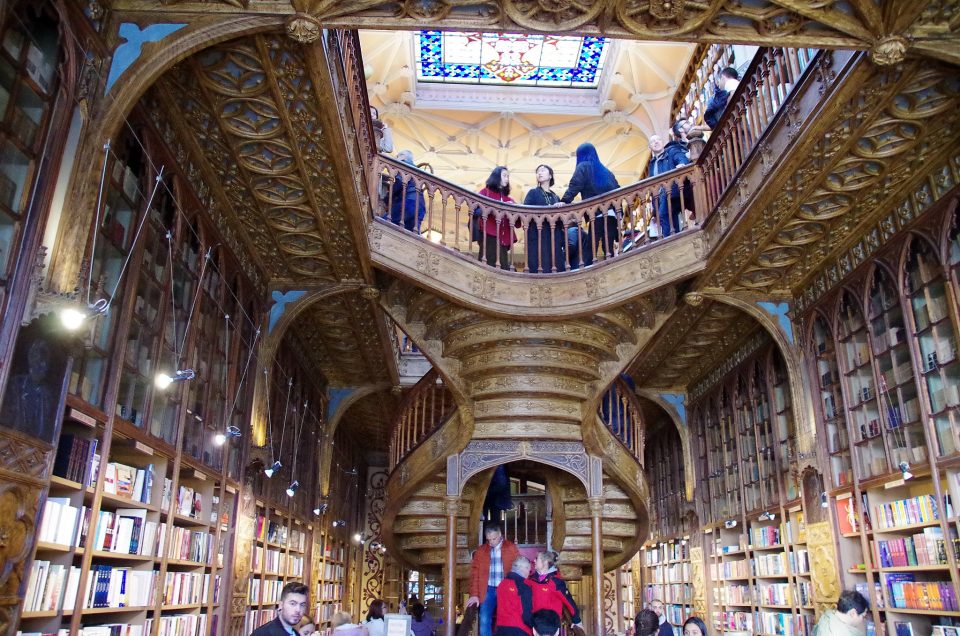
© Balou46, CC BY-SA 4.0 via Wikimedia Commons
From there we walked over the Dom Luis I bridge. This bridge has two levels. The upper level is only for pedestrians and trams. It offers the best views of the city. This was definitely Pretty Porto. The lower level of the bridge was closed, undergoing renovations. Cars need to cross the river on one of the other five nearby bridges that span the river. Like the elevator in Lisbon, the bridge was design by a disciple of the French civil engineer Gustave Eiffel.
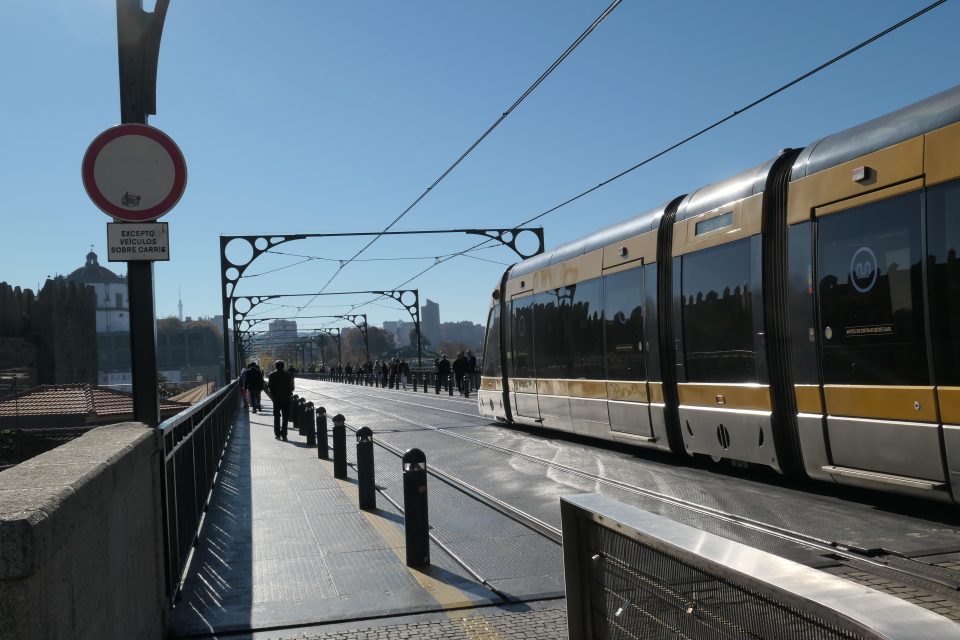
On top of Dom Lois I Bridge 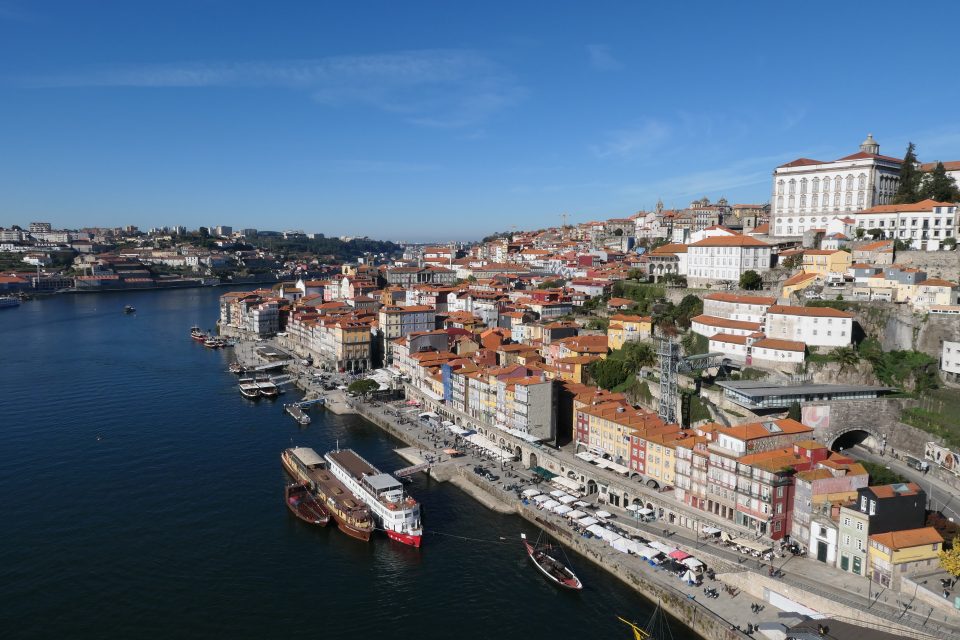
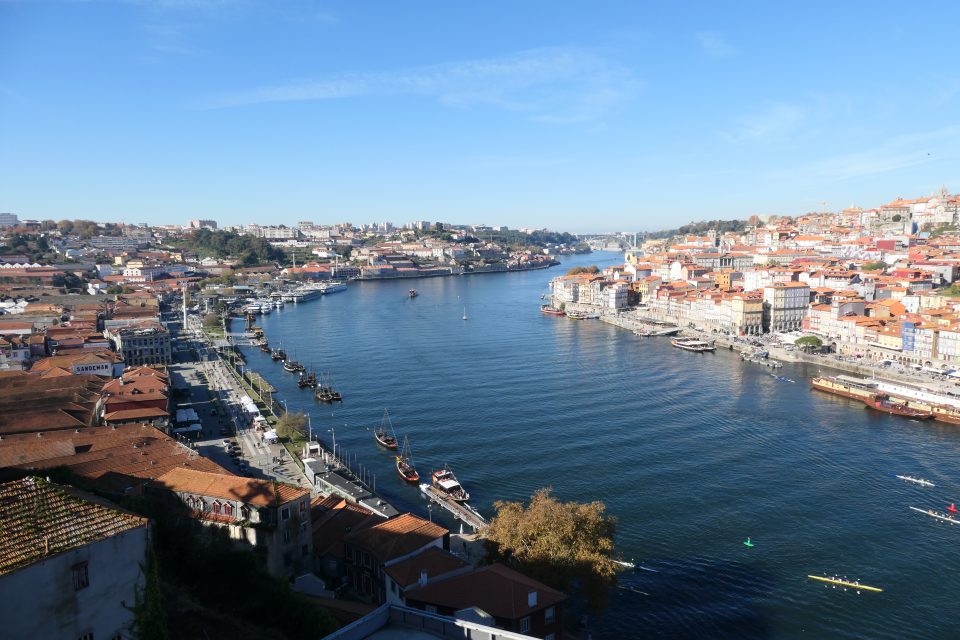
From there, we walked down many, many steps to reach Cais de Ribeira – the riverside promenade. We only knew about the staircase from a tourist information guide. In general, Google Maps has been doing a poor job in Porto – often steering us in the wrong direction. Not sure why. We learned to ask at the many tourist information shops which is the best way to go.
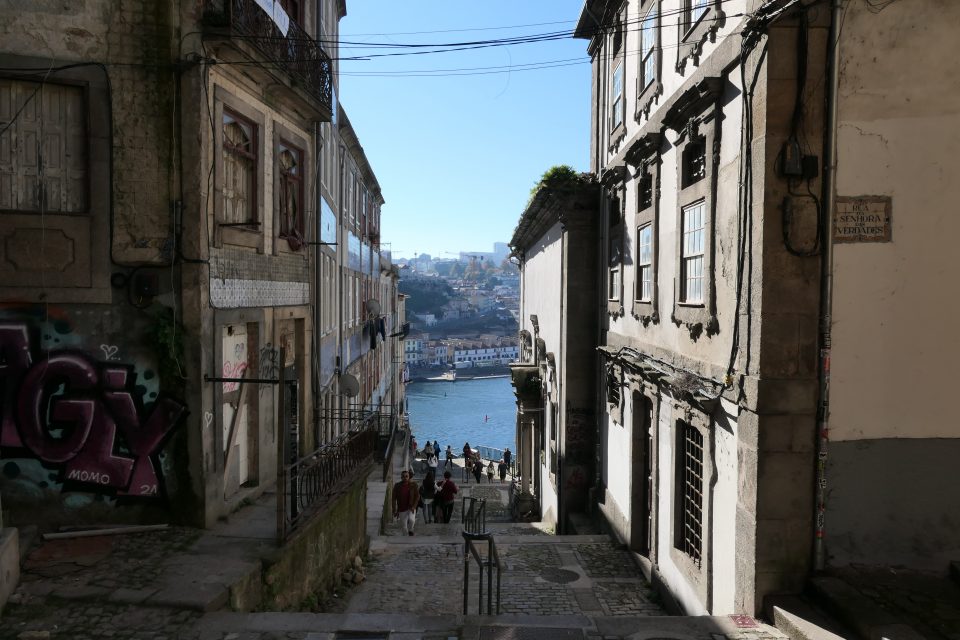
The steps down
The riverfront has the rows of typical colorful, tiled houses. There are many, many restaturants and it is the starting point for boat rides on the river. The place was full. The sun was shining. More Pretty Porto.
We walked back uphill to our apartment. The layout of the city was starting to become familiar, and we were no longer so confused by the intertwining streets like we had been the day before. Mark’s watch said we had climbed over 100 meters, that is over 30 flights of stairs. Some scenes along the way:
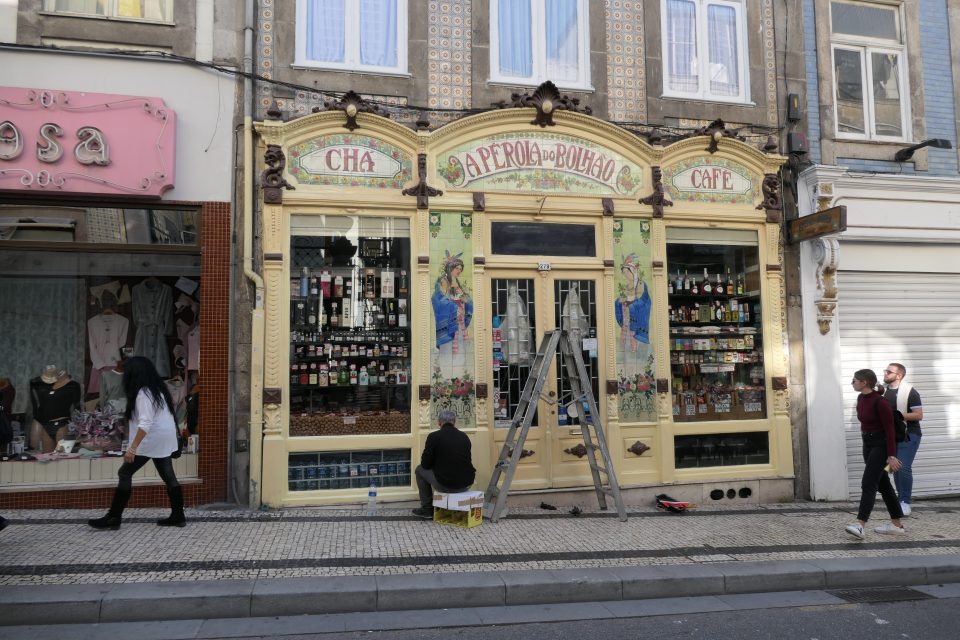
A beautiful storefront 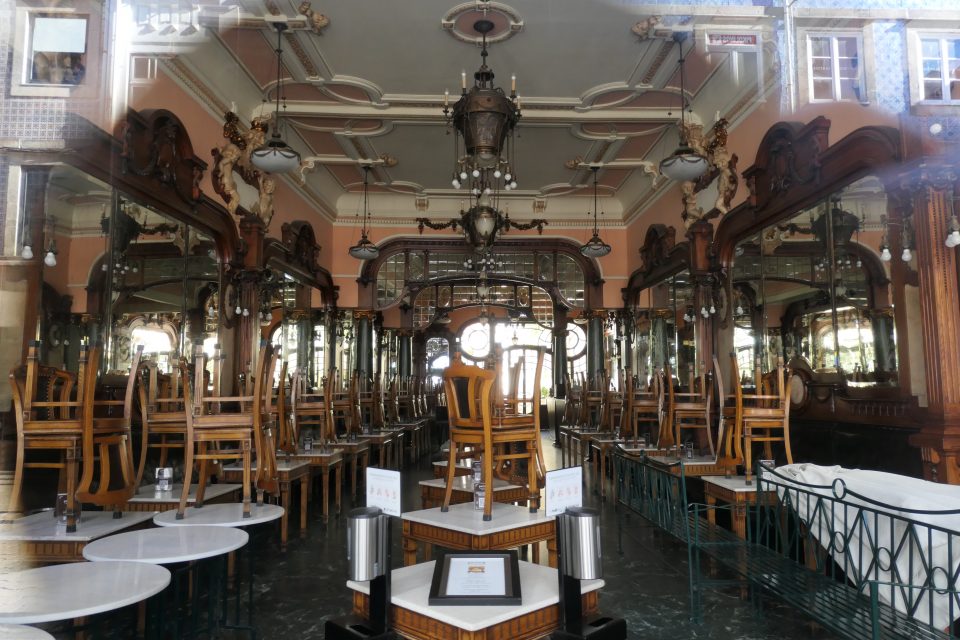
Inside the Majestic Cafe as seen through the window 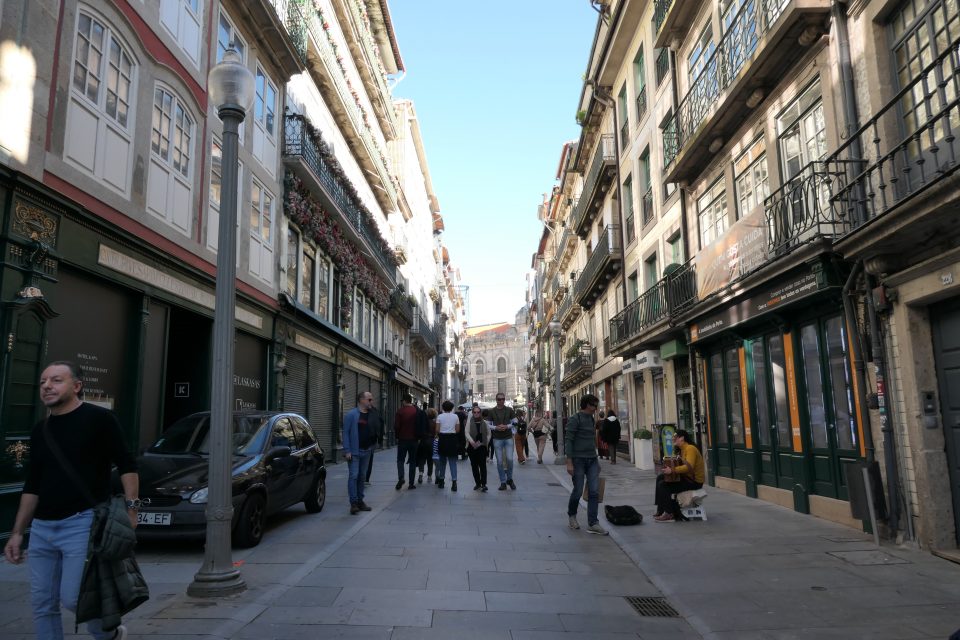
One of several pedestrian streets we walked along
After lunch at the apartment, we took the car to the western side of the city. We had two goals – one was to verify the four Wandering Jew locations in Porto, and the second was to visit Serralves Park.
On the way to the park, we went to a Garci de Orta statue. This is the same Garcia de Orta, whose statue we visited in Lisbon, and whose books we saw in Coimbra’s Joanine Library. This statue was located in an area of beautiful, large, stately private homes. Unfortunately, it looked like the letters of his name had been vandalized or the letters had fallen off as David said.
From there it was a two-minute drive, and a ten-minute search for parking to Serralves Park. This is a large, walled-in park, in western Lisbon. It has four main attractions – a world-acclaimed Museum of Modern Art, a Cinema house used for exhibits, a park with a Treetop Walk and an Art Deco house – we wanted to visit the last two.
The Treetop Walk is, just as it sounds, a walk among the tops of trees. Part of the park is on a very steep hill. From the upper level of the hill, they built this wooden walkway straight out, that has you walking among the tops of the trees that grow on the hill below. Very enjoyable, very Pretty Porto.
From there, we went to visit the Art Deco house. From the outside it was amazing – a beautiful pink Art Deco designed house overlooking a formal garden. Unfortunately, there was also a sculpture exhibit taking place in the park, and an artist placed a huge spider statue in front of the house. This only detracted from the beauty of the house in my eyes.
Inside was another surprise – I had misunderstood the website (seems to be a common theme here) and thought that this will be a house that is fully decorated – that inside it would be full of art deco furniture, which I would have loved to see. Instead, it is empty and houses art exhibits. It now had an exhibit of 70 works by Joan Miró. The building, with its clean symmetrical lines, to me was more impressive than the art.
On the way home from the park, we verified the remaining Wandering Jew sites – the synagogue, which also houses a Jewish Museum and the Porto Holocaust Museum – all of which are closed on Sundays and we could not visit inside.
Tomorrow we leave Pretty Porto for the Douro valley.
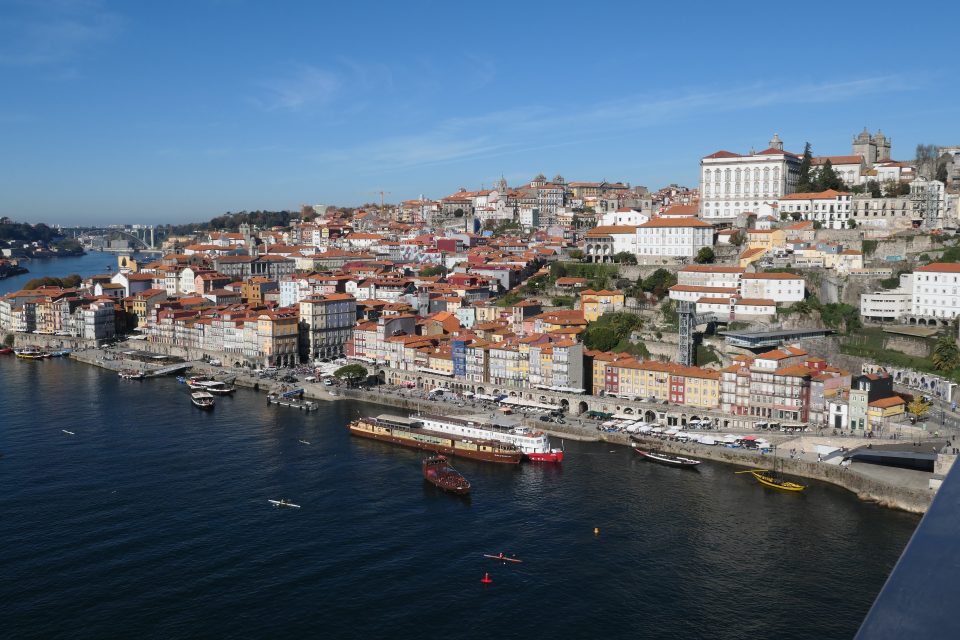
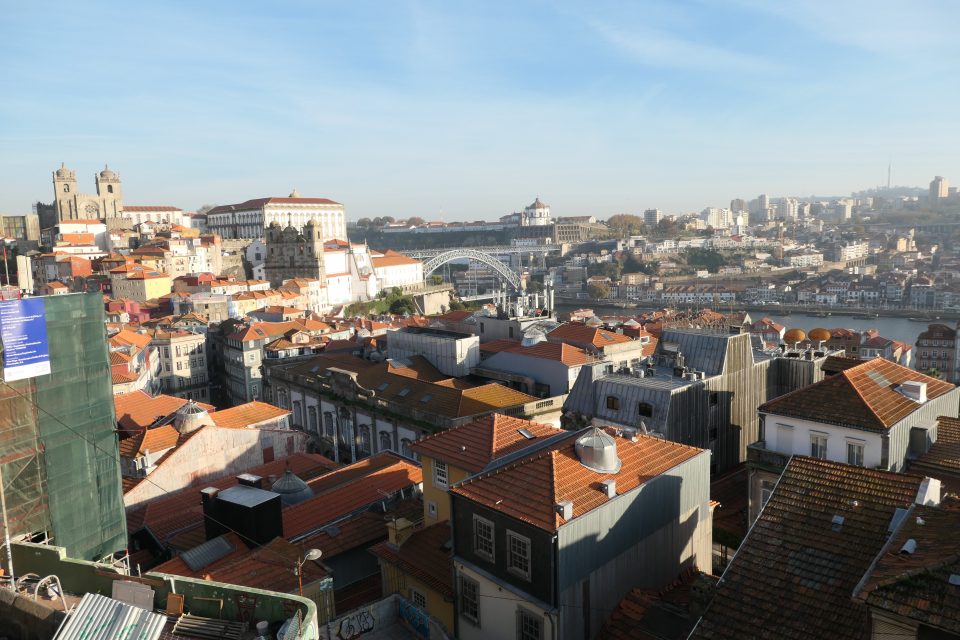
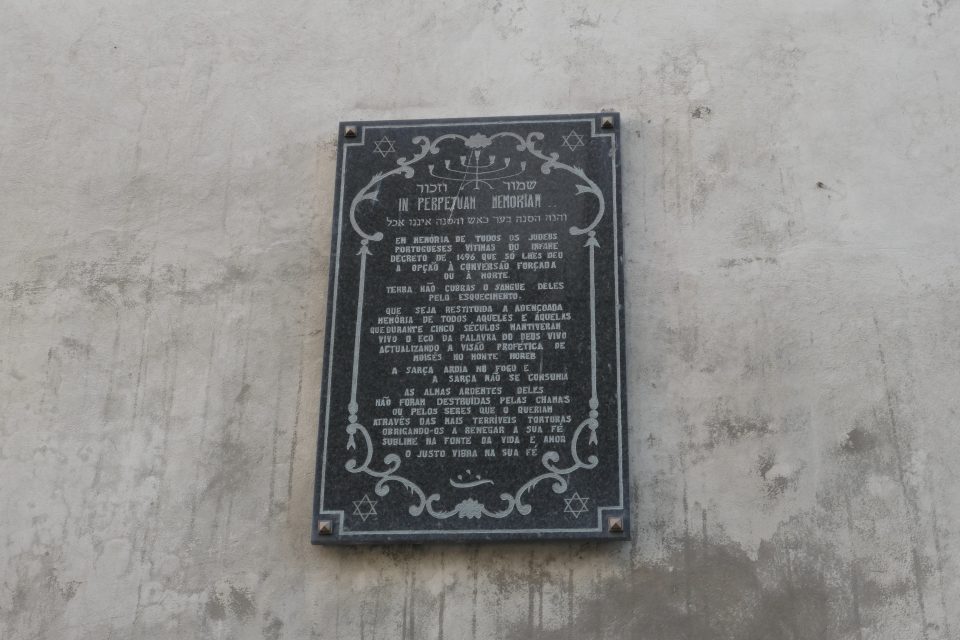
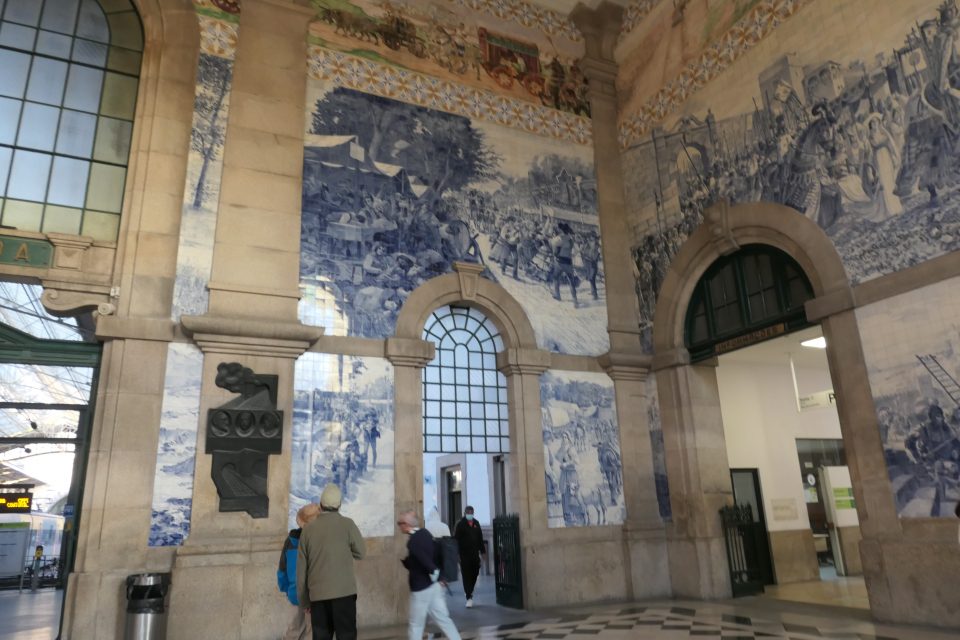
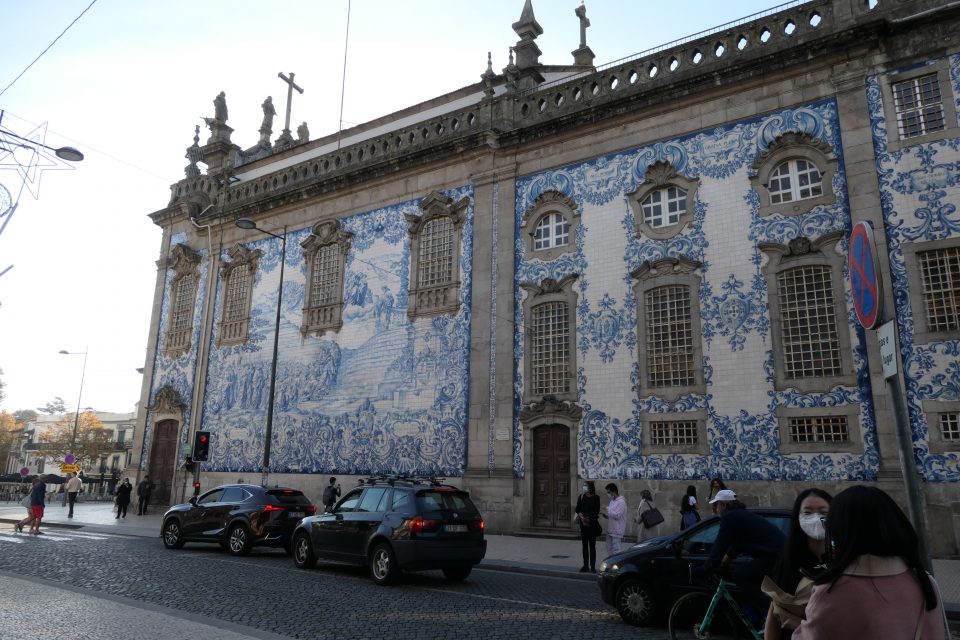
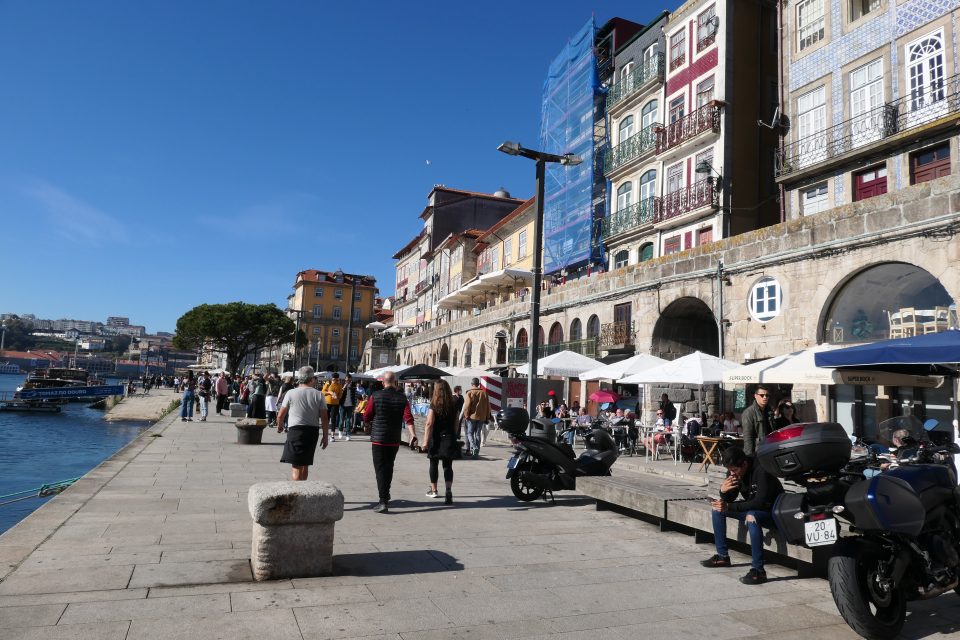
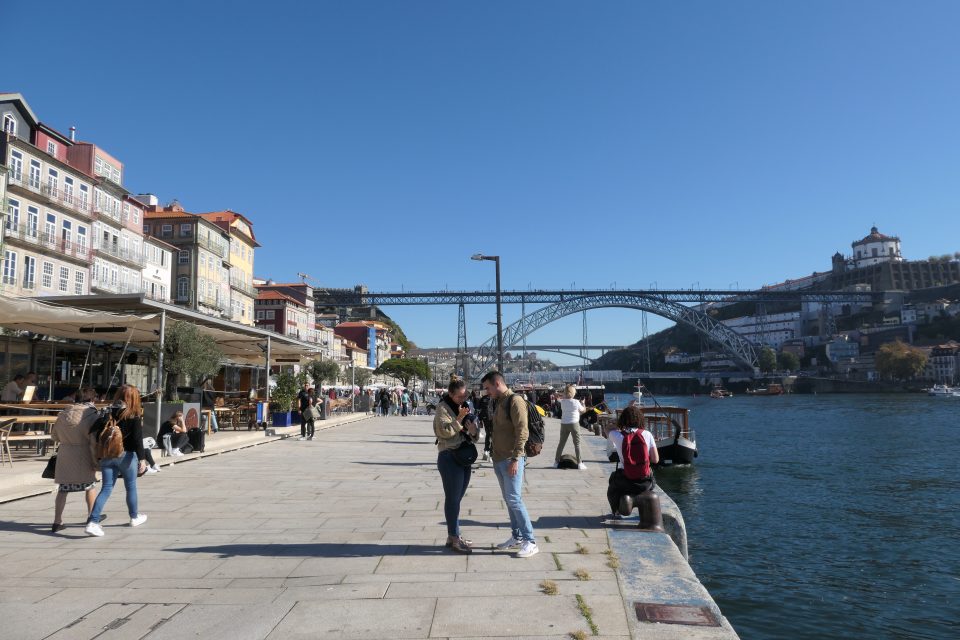
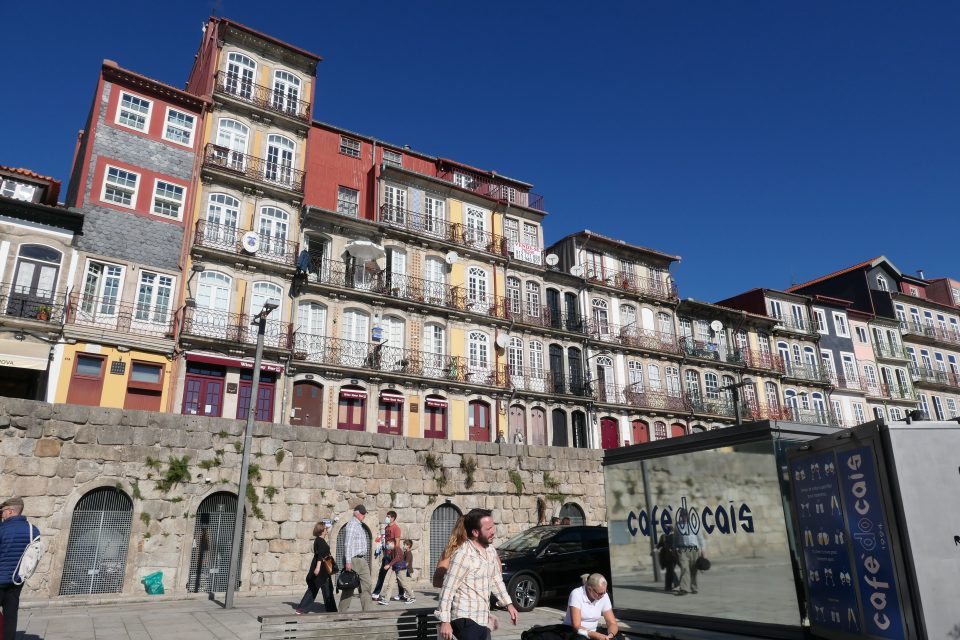
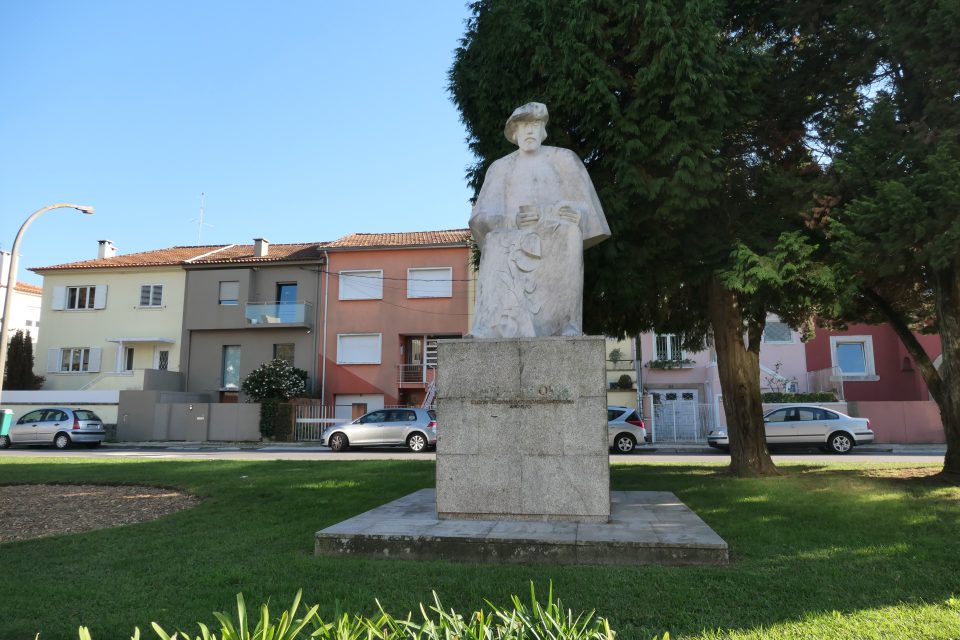
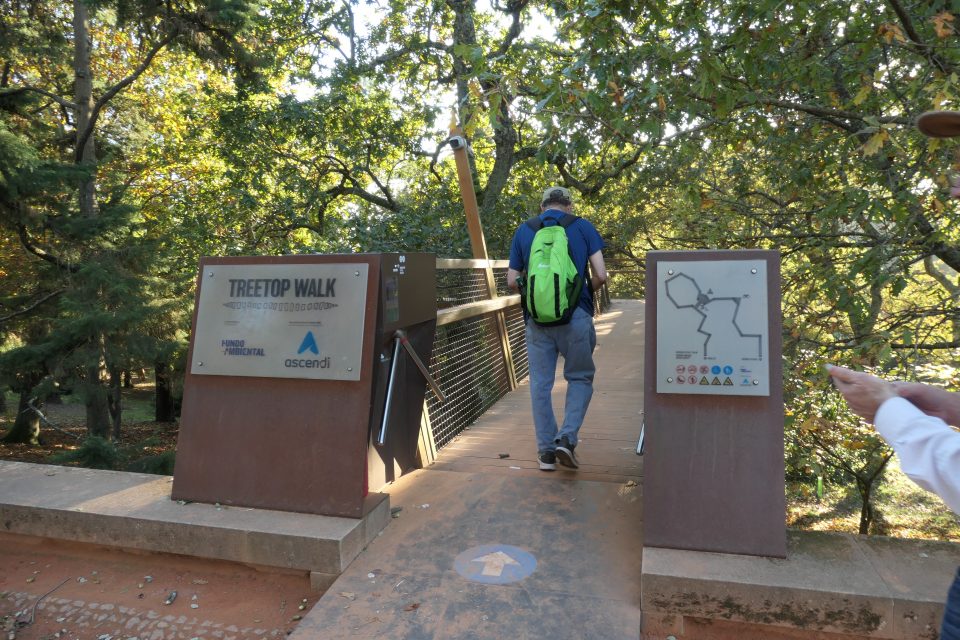
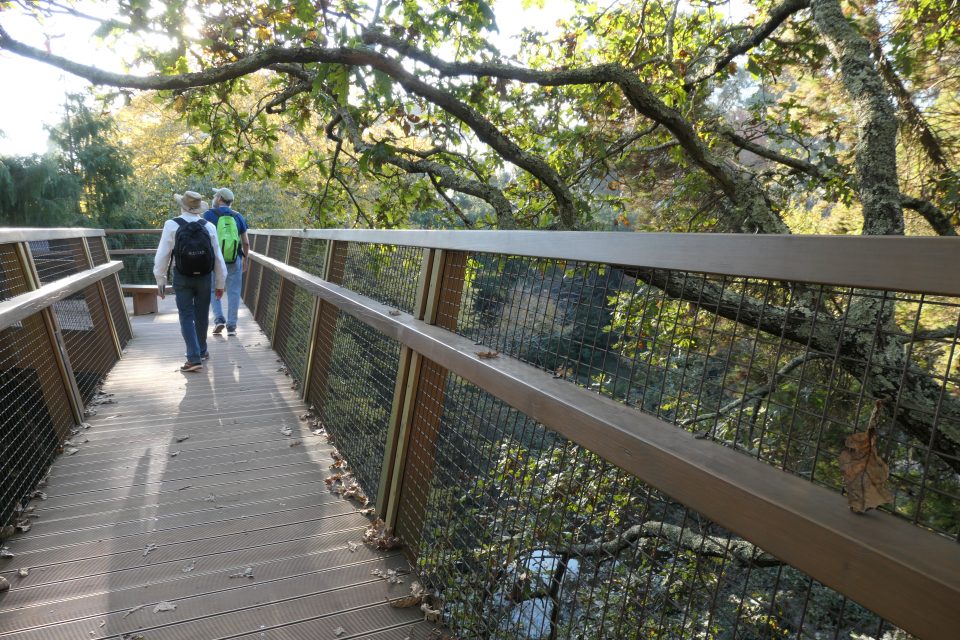
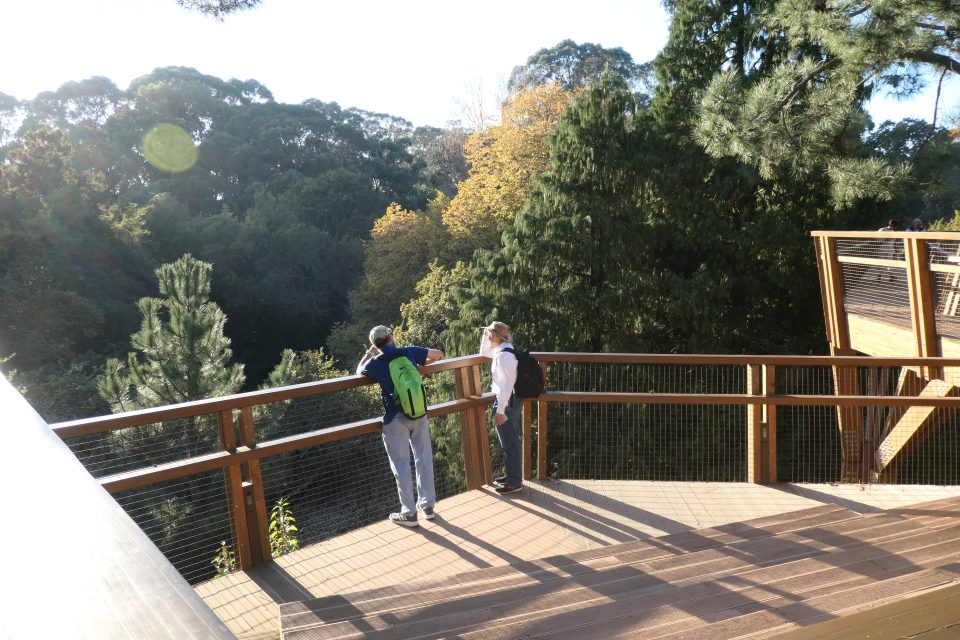
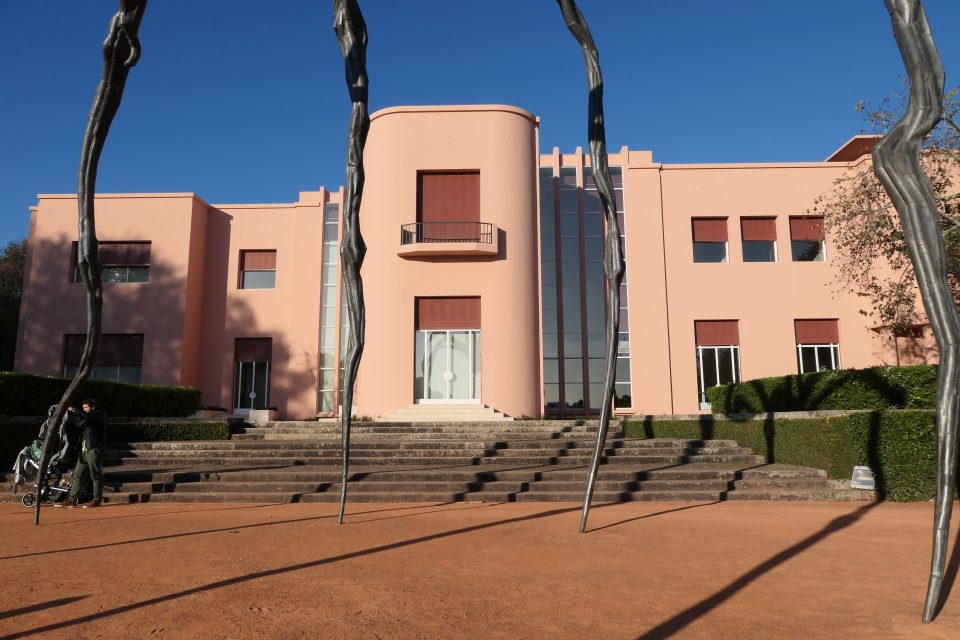
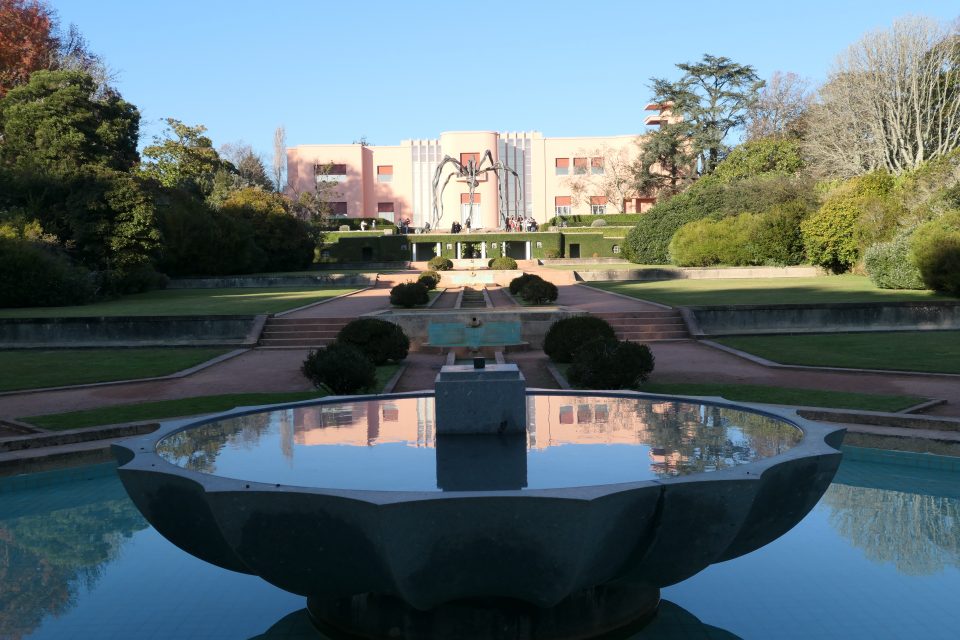
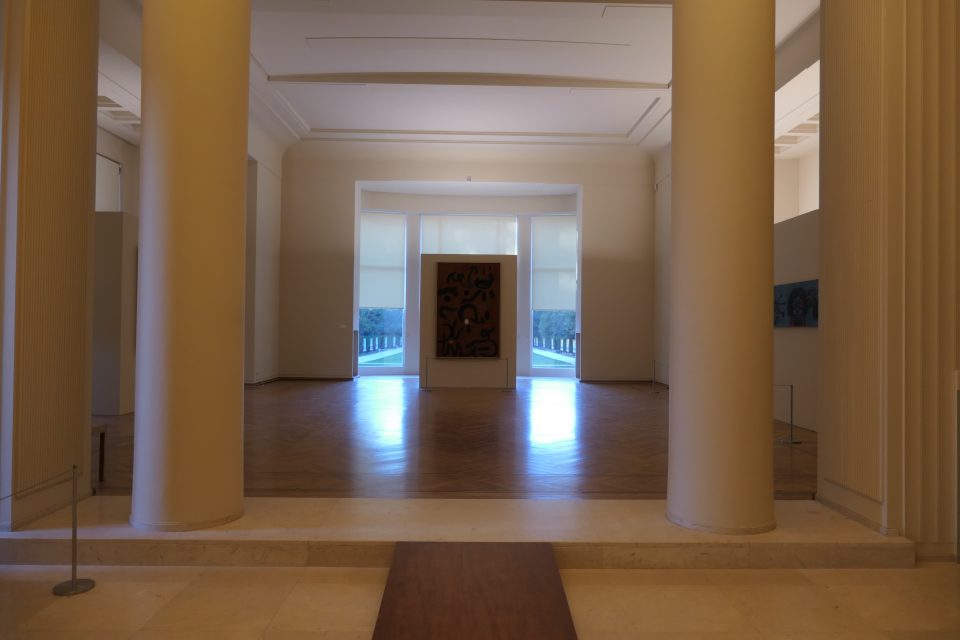
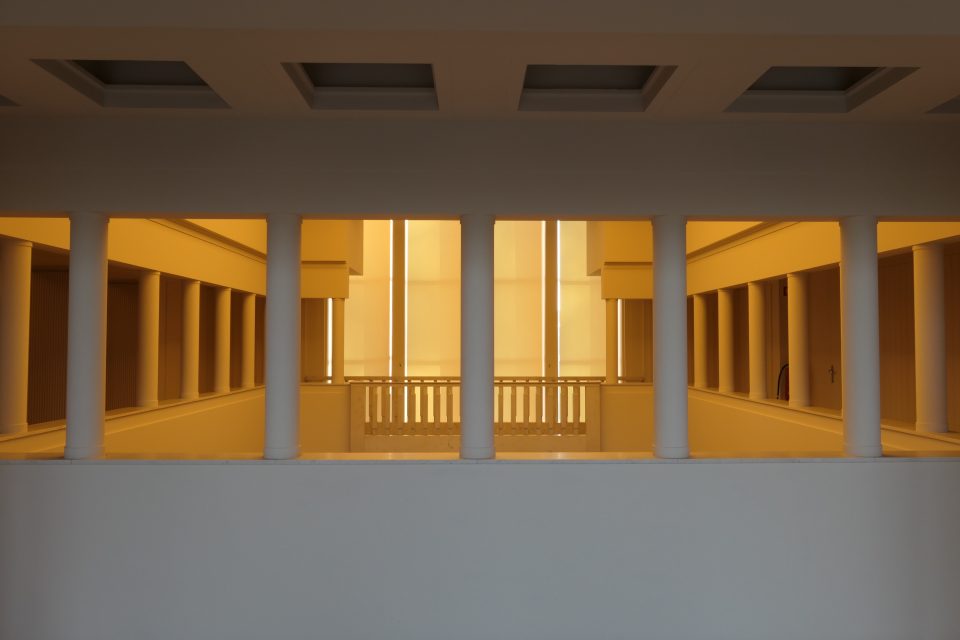
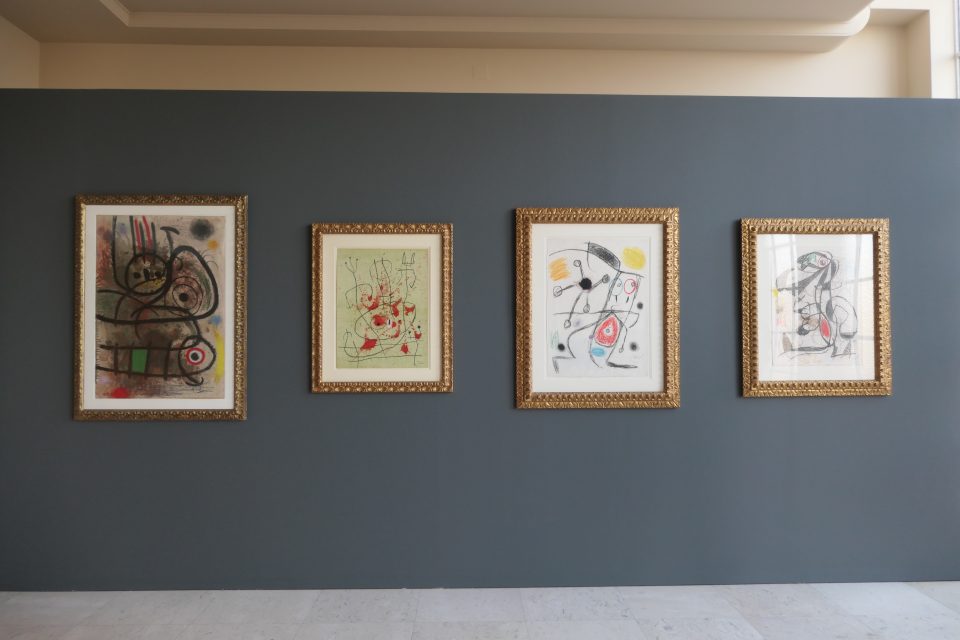
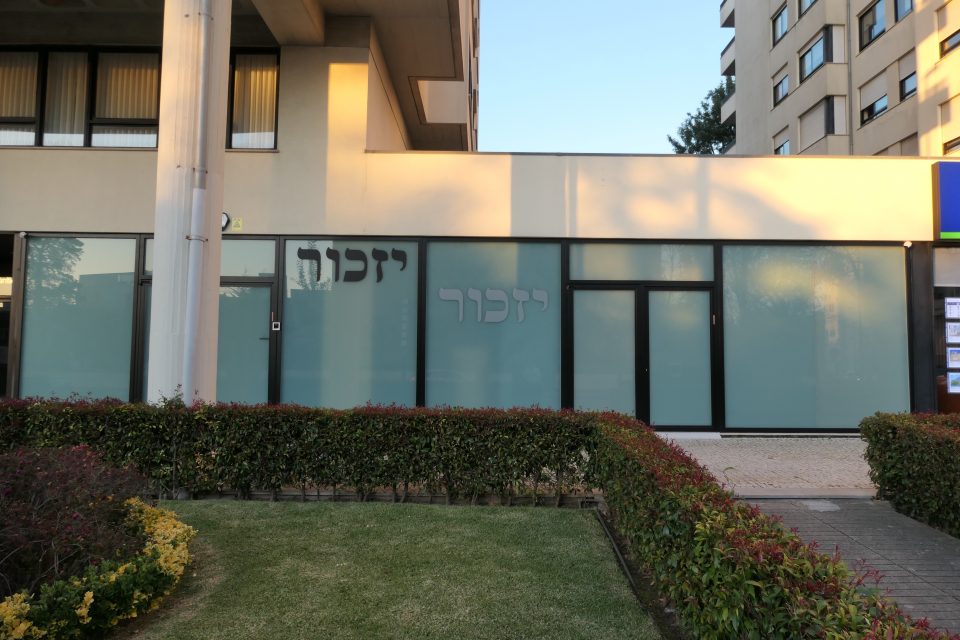
Did Mark and David notice barbed wire around the Porto synagogue?
Pretty interesting
Tree top walk looks so cool!